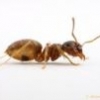As Kevin said, 16 is the unofficial standard. Some, myself included, use a larger (18-25mm, 20mm for me) tube for larger species. 12mm should work for Lasius neoniger, but I'd still recommend a 16 x 150mm tube. You'll come to appreciate the longer test tubes, I promise.
It depends on the species, but many would appreciate a very thin layer of sand in both the outworld and colony. They will use it to block off areas and help regulate humidity. Just don't go crazy.
Tubing size depends on your queen size and your test tubes. Make sure it's wide enough to allow the queen and/or multiple workers abreast to comfortably pass. Ideally, the tubing should be able to just slip in the test tubes, but be very careful if you have glass test tubes. They're not designed to withstand that type of stress and will break deceptively easy.
















